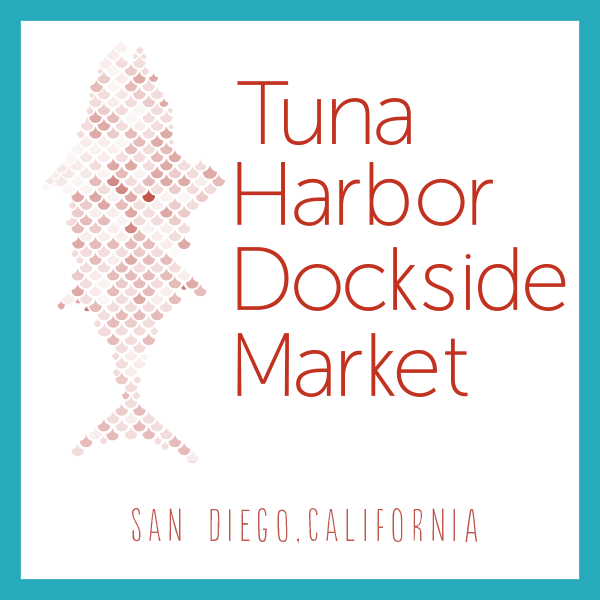Our Story
Tuna Harbor Dockside Market’s open-air seafood market - the pride of the Port of San Diego. Open on Saturdays from 8am until 1pm, or until sold out.
The public and chefs, will delight in purchasing fresh caught seafood direct from their local fishermen. Sustainable fishing practices, minimal carbon footprints, and local harvesters – Tuna Harbor Dockside Market benefits all.
Get closer to your food sources. Gain an understanding and appreciation of the fishing. Be inspired to consider careers in commercial fishing. Our fishermen love to talk - Ask them about what they sell, how they catch & harvest it, and their favorite way to cook it! The small scale fishermen bring in what they caught in the previous week. This amount will vary and may be limited for certain species . For this reason we suggest you arrive at the market before 11 am to have a large variety of choices. Some species shall still remain available till closing.

Our Goals
Provide a framework to reconnect the fishing communities to the public
Raise awareness and understanding of a locally caught seafood source
Inspire a sense of pride in San Diego’s history and culture of commercial fishing
Create an awareness of San Diego’s working fishing harbor
Educate about the environmental benefits of eating underutilized local seafood species
Offer a steady and dynamic supply of a wide variety of locally caught seafood
Provide seafood choices that affirm regional cultural traditions, support local communities, and contribute to the health and productivity of natural marine resources
How we fish
Hook and Line
Hook-and-line is a general term used for a range of fishing methods that employ short fishing lines with hooks in one form or another. It includes hand-lines, hand-reels, powered reels, rod/pole-and-line, drop lines, demersal longlines, and troll lines, all using bait or lures to attract target species. This sustainable method is a more selective process that produces minimal bycatch and doesn’t come in contact with the seafloor.
Trolling
This technique draws various types of lures through the water from a moving boat or while casting and retrieving bait from a stationary position. Like hook-and-line, this method targets specific species, minimizing bycatch and disruption of the seafloor.
Pot and Traps
Cages and baskets are set on the seafloor and connected by buoy lines on the surface. Marine life enter through a one-way opening and cannot escape. Unwanted species are easily removed from traps without injury and returned to the sea alive, when fished responsibly and regularly. Because traps are sedentary on the seafloor, little damage to the habitat occurs.
Diving
Certain species; sea urchins, sea cucumbers, top snails are handpicked by divers. The divers use a specialized stainless steel tool to pry them off the rocks. They place the sea urchins in cages or mesh bags and lift them to the surface. The divers use either scuba gear or surface supplied air delivered by a hose .In order to have a steady supply the animals are offloaded and placed in refrigerated circulating saltwater tanks.
Long line fishing
Longline fishing, or long-lining, is a commercial fishing technique. It uses a long line, called the main line, with baited hooks attached at intervals by means of branch lines called snoods. A snood is a short length of line, attached to the main line using a clip or swivel, with the hook at the other end.
Gill net fishing
A gill-net is a wall of netting that hangs in the water column, typically made of monofilament or multifilament nylon. Gill-net Mesh sizes are designed to allow fish to get only their head through the netting but not their body. The fish's gills then get caught in the mesh






